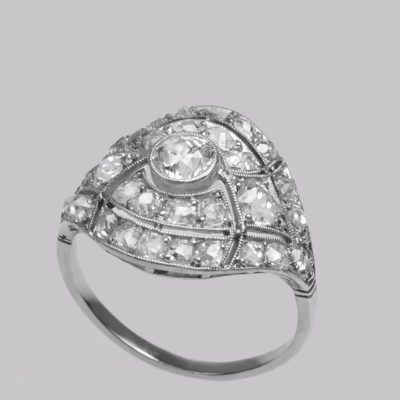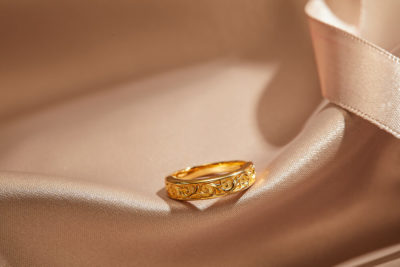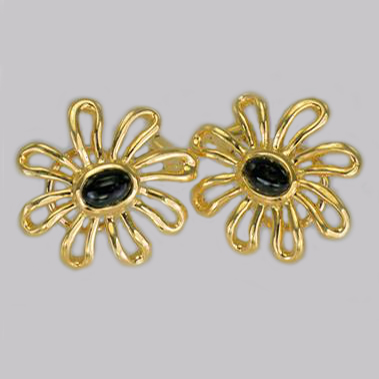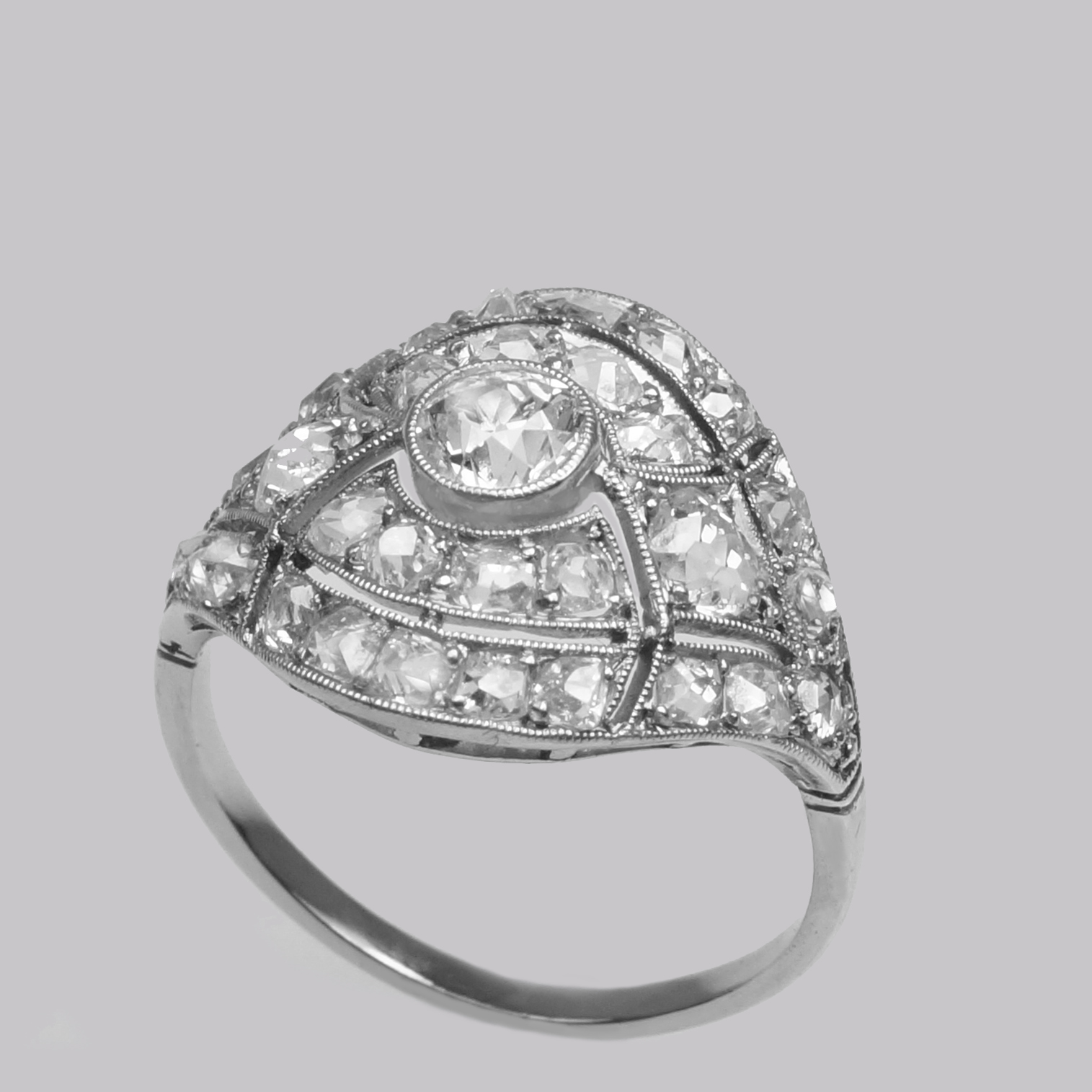
It’s well known that diamonds are one of the hardest materials on earth, in fact, they are the toughest naturally occurring material. The strength of diamonds means that they are widely used in industrial settings – commonly, diamond cut drill bits. They’re also popular in jewellery, the sparkle attracting many a gleaming eye. But what is the reason for this? We explore exactly what makes diamonds so hard.
What Exactly Are Diamonds?
Diamonds are made from crystalised carbon, a process that happens when there is extreme heat and pressure. They are formed around 100 miles below the earth’s surface, where the temperatures are roughly 1,200 degrees Celsius / 2,200 degrees Fahrenheit. The process of carbon crystallisation is thought to take more than a billion years, before a diamond is born.
The naturally occurring diamonds that are found on earth are believed to have made their way to the earth’s surface after a volcanic eruption that happened deep within the earth, a long time ago in earth’s history.
What Makes Diamonds So Hard? Understand the Science
The compounds that make a diamond are what make this stone so hard.
Remember that diamonds are made of crystalised carbons, and it’s the process of crystallisation that explains what makes diamonds so hard.
Hot temperatures and pressure cause carbon atoms to bond together in a very tight and strong way, with each atom bonding with four other carbon atoms. The process continues and eventually a crystal is created.
It’s the structure of the bonded carbon atoms, of which there are billions, all locking into place to build a compact crystal – a diamond.
What is the Mohs Scale?
Diamonds are the tenth and final level of the Mohs scale, which is essentially a ‘hardness’ scale designed to determine the durability of gemstones and other natural materials.
Created by Friederich Mohs, a German mineralogist, in 1812, the scale lists ten materials and rates them by strength:
- Talc
- Gypsum
- Calcite
- Fluorite
- Apatite
- Orthoclase
- Quartz
- Topaz
- Corundum
- Diamond
To get an idea of the different strengths Mohs is dealing with, talc is considered easy to scratch with a fingernail, whereas diamonds can only be scratched by other diamonds.
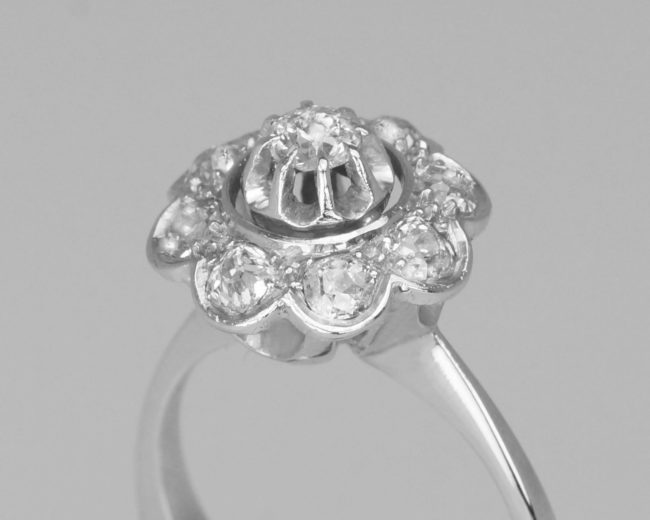
How Are Diamonds Cut?
As the strongest naturally occurring material, you might be wondering how jewellers are able to cut rough diamonds into the pretty shapes that are used in rings, necklaces, and more. There are a few techniques which we’ll explain.
Cleaving
To begin shaping a rough, natural diamond, it must first be cleaved. This is a process where the diamond is split among its tetrahedral plane – its weakest spot. The diamond is held in place in a mould, and a groove is cut along the length of the plane. Then a steel blade is held on top of the groove, and hit with force, thus cleaving it into two.
Sawing
In the event that there is no clear tetrahedral plane, a diamond will be cut using either a laser, or a phosphor-bronze blade spinning at a high rate.
Bruiting/Cutting
To create the final shape for a piece of jewellery, a diamond must be cut with careful precision. This can either be done by hand – ‘bruiting’ – or with a machine – ‘cutting’. Either way, another diamond is used to make the cuts, because diamond cuts diamond.
Are Synthetic Diamonds as Hard as Real Diamonds?
There are many factors to consider when choosing a diamond to buy, especially when it comes to choosing that all important engagement ring. If you are considering purchasing a synthetic, lab grown diamond, instead of a natural diamond, you may have questions about its strength and durability.
Due to the way in which diamonds are formed, and the reaction that happens in the carbon compounds when placed in high heat and pressure, all diamonds are of equal hardness. The very nature of the stone means that it can only be created in one way, and that way demands the compacted structure of carbon atoms. Therefore, synthetic diamonds are just as hard as real ones.
Does a Higher Carat Diamond Mean It’s Stronger?
No, a diamond is equally hard and strong regardless of its carat. In diamonds, the carat measurement refers to its weight.
A one carat diamond weighs 200mg, which is about the same as a rain drop! Find out more about carats with our guide.
Why are Diamonds Popular in Jewellery?
The first known piece of diamond jewellery was from the year 1074, when a diamond stone was used in a crown belonging to an Hungarian queen. However, it wasn’t until the 15th century, when jewellers discovered how to cut diamonds, that they started appearing in jewellery regularly.
Back then, and still now, diamonds are revered because they are difficult and rare to find (naturally). That’s why they became so popular particularly among Royal families and in upper class society.
The fact that they were so hard to find, plus their durability and stunning appearance, is why lab-made diamonds were then created in the 1950s. First produced by researchers in Stockholm, Sweden, these soon became mainstream.
Discover our Range of Diamonds
The hardness of a diamond is what attracts many people to them because they know they will stand the test of time. This means diamond jewellery can be passed down through many generations and stay in a near-original state. Explore our range of diamond engagement rings to find that perfect stone to give to your loved one.


